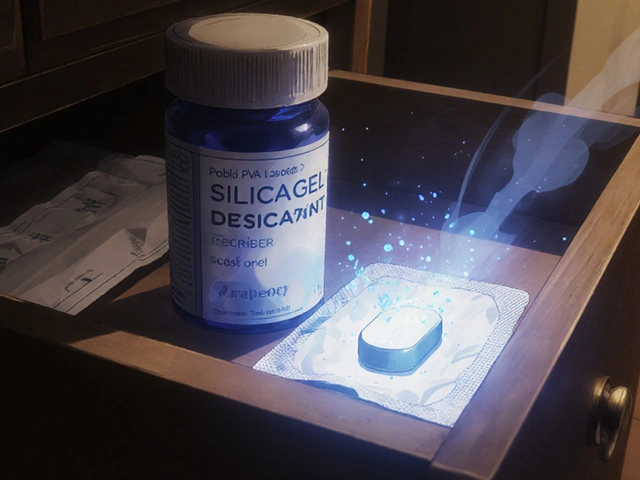Ever felt that flutter or thump in your chest when you’re just trying to relax? Now imagine that while sitting at Gate 57, miles from home, passport in hand, waiting to board a flight. If you’ve ever dealt with arrhythmia—or even mildly irregular heartbeats—you know how unsettling it can be. Traveling ramps up the challenge. New routines, unfamiliar food, time zones, and stress can all nudge your heart into a rhythm you didn’t sign up for. But instead of skipping the fun, you just need the right game plan. Taking control lets you see the world on your own terms, arrhythmia and all.
Packing for Arrhythmia: What Goes in Your Travel Bag?
Think you can toss all your meds in your checked bag and hope for the best? Not so fast. That’s one amateur mistake you don’t want to make if you have arrhythmia. Always keep a solid stash of your heart medicine right in your carry-on, even if you never miss a dose at home. Lost luggage is rare, but missed meds? That can mess with your rhythm faster than jet lag ever could. Pharmacists recommend carrying at least twice as much as you’d expect to use, just in case flights get delayed or canceled (which seems to happen at the worst moments, right?).
Don’t forget a copy of your prescription, a summary of your heart condition, and your doctor’s contact info, all tucked somewhere handy. Some travelers also keep a medical alert card in their wallet—nothing fancy, just clear and to-the-point. And for tech lovers, there are now apps that store your emergency details, ready to pop up if you ever need help when words won’t come out right. That can be a lifesaver if you faint or feel confused during a particularly rough episode.
A heart rate monitor or smartwatch makes sense if you like to keep tabs on your pulse. The easier it is to check, the quicker you can head off trouble. Portable devices like the KardiaMobile or even some smartwatches can record an ECG strip—great for emailing to your doctor if you feel off and want their advice even from far away. Just double check your device and app work in the country you’re visiting, and keep a charging cable handy in your day bag so you never run out of battery at the wrong time.
Here’s a quick comparison of useful gadgets for arrhythmia management on the go:
| Device | Primary Use | Travel-Friendly? |
|---|---|---|
| KardiaMobile | ECG on demand | Yes, compact and works with any smartphone |
| Apple Watch Series (with ECG) | Continuous heart monitoring, ECG | Yes, but charging needed daily |
| Fitbit Sense | Heart rate alerts, occasional ECG | Yes, longer battery life |
Lastly, think about travel insurance. Not all policies cover pre-existing conditions or emergencies tied to arrhythmia. Read the fine print, ask questions, and get covered by a plan that won’t leave you with a giant bill if you need to see a doctor abroad.
Navigating Airports and Transit: Getting Past Stress and Scanners
Airports might feel like endurance sports for the anxious heart—security lines that never move, dash-to-gate moments, people bumping into you with suitcases. Add the worry about those full-body scanners messing with your pacemaker or ICD, and it’s easy to see how your rhythm can go haywire before you even board the plane. Here’s a fact: the Transportation Security Administration (TSA) says the scanners are safe for most implanted cardiac devices, but the handheld magnetic wands should be avoided if you have a pacemaker or ICD. Show your device card, ask for a gentle pat-down, and don’t be shy about saying what you need.
Wear loose clothes—sounds basic, but tight belts and waistbands can irritate implanted devices or their sites. Airport pressure and dehydration can trigger palpitations; sip water and snack regularly, even if your appetite vanishes amid the chaos. Coffee? If your arrhythmia acts up around caffeine, skip the airport latte and try herbal tea.
Long flights are a challenge. Sitting for hours means poor circulation, which can nudge your heart into a strange beat, especially if you’re prone to clots. Make it a habit to get up and stretch every hour or so, walk the aisle, flex your ankles and calves—even simple toe wiggles help blood move along. Compression socks aren’t just for retirees; they lower your risk of deep vein thrombosis and swelling, especially on overnight flights.
Traveling across time zones throws off more than just sleep. Studies show even minor disruptions in body clock patterns can affect heart rhythm. To soften the blow, try gradually adjusting your medication and sleep times in the days before travel. If you land somewhere many hours ahead or behind, talk to your doctor about the best way to space out your meds. They might recommend splitting doses or changing the schedule to fit the local clock.

Managing Symptoms Abroad: Handling Hiccups Far from Home
Arrhythmia loves a surprise party—sometimes just as you settle into a cozy Airbnb or the last seat on a foreign bus. The trick? Don’t panic. Write down your symptoms, how long they last, and what you were doing when they started. Most palpitations or missed beats aren’t a big deal, but if you feel dizzy, weak, short of breath, sweaty, or faint, sit or lie down and ask for help right away.
Apps like Medisafe or MyTherapy can buzz reminders so you never miss a dose, even in a schedule that feels flipped upside down. Use location-based medical directories to find the nearest clinic or hospital fast—Red Cross has a good one, or check out the doctor lists provided by embassies in almost every big city. The phrase “hospital” isn’t always universal, so knowing how to say emergency or doctor in the local language goes a long way.
It helps to know what actually triggers your symptoms. Is it spicy street food? Maybe extreme heat was the culprit last time. Keep a running list on your phone. That way, you won’t be guessing if a certain activity or food is a risk or not. Not sure if an episode is serious enough for a doctor? The American Heart Association says emergencies include: chest pain, significant shortness of breath, fainting, or heartbeats over 150 per minute that won’t stop. For these, don’t wait—seek medical attention immediately.
Traveling alone? Tell a travel buddy or the hotel staff about your condition and what to do if you have a problem. Many folks are happy to help, but they’ll need to know what’s going on. Show them your emergency card or medical app; they can read instructions even if you can’t speak clearly.
Hydration is your friend. Dehydration—say, from hot weather, extra sightseeing, or skipping fluids—makes arrhythmia worse. Keep water on you at all times, and remember: alcohol and arrhythmias mix like oil and water. There’s a reason atrial fibrillation spikes after a big party weekend. If you’re going to drink, keep it light and alternate with water.
Returning Home: Keeping the Rhythm Steady Post-Trip
Getting home isn’t always the finish line. Your body might need a few days to adjust back—jet lag, new germs, and disrupted routines can still throw off your heart rhythm. Keep a mini-journal of your symptoms for a week after you return. This helps spot trends and lets your doctor know if anything got worse while you were away. A check-in appointment soon after a long trip is smart, even if you feel fine.
Lots of travelers drop the ball on medication times while abroad, then scramble to get back on track at home. Reset your schedule slowly—don’t take double doses, and don’t rush to “catch up” if you missed one by a few hours. If you’re confused about the best way to reset, call your heart specialist for a quick tune-up. They’d rather help now than see you in the ER later.
Here’s a tip: print out your travel medical records and add any new symptoms or meds picked up on the trip. Toss those into your regular files. That way, you’re never left trying to describe complicated symptoms from two months ago when all you wanted to do was see the Eiffel Tower.
Staying social makes a difference. According to data from the Heart Rhythm Society, people who share their travel stories and ask for advice from friends or online groups are much more likely to stick with heart-healthy habits long after they land. So swap advice, trade stories, and use what worked for others to plan your next adventure. Managing arrhythmia management isn’t just about pills and doctor appointments; it’s about living your best, most active life, travel included.





Picture this: the roaring engines of a jet and your heart deciding to throw a party of its own. The anxiety spikes like fireworks, and suddenly the world feels like a stage where every seat vibrates with your pulse. You clutch your carry‑on like a lifeline, knowing that a missed dose could turn that theatrical drama into a medical tragedy. Imagine the TSA scanner humming, and your implanted device whispering a nervous "whoops" as the magnetic field brushes past. You stride through security, a drama king in a sea of bored travelers, demanding that the staff respect your fragile rhythm. The airline announcement blares, and you wonder whether the cabin pressure will coax your ventricles into a rebellious tango. You pull out your smartwatch, the tiny screen flashing a heart rate that resembles a frantic drum solo. The device, a modern oracle, records each irregular beat, ready to be sent to your cardiologist across continents. You sip water, because dehydration is the sneaky villain that loves to amplify arrhythmias at 30,000 feet. The flight attendant smiles, unaware that your anxiety is a storm brewing beneath the calm veneer of the aisle. You keep your medication within arm's reach, double‑packed, because a lost luggage incident could become a catastrophic plot twist. The hours stretch, and you practice deep breathing, a mantra that steadies the narrative of your heartbeat. When the plane finally lands, you exit into a foreign city, still clutching your medical alert card like a ticket to safety. You navigate the bustling streets, mindful of every spicy street‑food temptation that could sabotage your rhythm. You log each episode in a travel journal, a chronicle that will inform your doctor back home. Finally, you realize that with the right preparation, the world can be explored without surrendering to the drama of an uncontrolled heart.
i love how this post breaks things down in simple steps, i felt less scared after reading it. keepin a copy of your meds in your hand bag is a must and i always double check. also, having a water bottle handy during long flights helped me stay calm. thank u for the tip about compression socks, i tried them and felt better. hope everyone can travel safe!
you totally nailed the vibe here i feel pumped to actually plan my next trip now. staying hydrated and making a quick note of triggers is so clutch. the reminder apps are a life saver - i set mine to ping every few hours. love that you mentioned the gentle pat‑down option at security, it makes the whole process way less scary. keep spreading the good energy!
Great summary of practical steps; especially the part about checking device compatibility abroad. Adding a medical alert card to your wallet really does make a difference in emergencies. Also, packing a portable charger for your monitoring device can prevent unexpected outages during long layovers. Remember to inform airline staff about any implanted devices if you feel uneasy.
Thanks for the concise reminder to keep meds in the carry‑on.
Honestly, most of this advice is just common sense wrapped in fancy wording. You can’t expect airlines to juggle your heart rhythm for you; they’re not cardiologists. If you’re so worried about scanners, just ask for a pat‑down and move on. The whole “bring a smartwatch” spiel is a marketing ploy-any phone can track pulse with a free app. And don’t forget that travel insurance often excludes pre‑existing conditions, so buying a pricey policy may be a waste of money. Bottom line: manage your meds, stay hydrated, and quit overthinking every little detail.
Wow, that was a blunt take! While I get the point about staying practical, the reality for many of us with arrhythmias is that each small precaution feels like a lifeline. Even a simple reminder to hydrate can be the difference between a calm flight and a panic episode. And yes, the smartwatch can actually give peace of mind when you’re far from home. Let’s remember that the advice here, though straightforward, can genuinely empower travelers dealing with heart conditions.
Look, you guys keep talking about “portable chargers” and “watch apps,” but who’s telling you the government isn’t planting micro‑chips in those devices? Every time you use a health tracker, you’re feeding data straight to an unseen surveillance network. They’ll know exactly where you are, what your heart is doing, and can manipulate the signals to cause your arrhythmia to flare up. Stay alert, stay off the “smart” gear, and trust your own body.
Can we just pause and consider why the airline industry is so quick to push these “smart” health gadgets? It’s a classic distraction technique, hiding the fact that they’re collecting biometric data for unknown purposes. If you’re traveling with a heart condition, you’re a prime target for data mining. The safest move is to go low‑tech, keep your meds, and avoid any unnecessary wireless devices.
Totally agree with the emphasis on staying hydrated and having a backup med supply. It’s also a good idea to let a travel buddy know about your condition so they can step in if you feel off. Small steps like these make a big difference on a long trip.
While everyone is busy sharing generic tips, the real truth is that the global health agencies are coordinating a hidden agenda to monitor heart rhythms worldwide. The “medical alert card” is just a cover for a tracking system that syncs with satellites. If we keep spreading this info, we’ll eventually push back against the covert control of our own bodies.